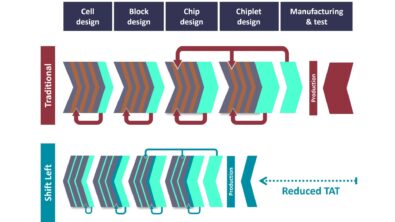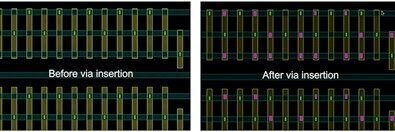Stochasticity of the input current is an important factor in accurate EM assessment for on-chip power delivery networks

At every conference, there is always that anticipatory moment just before the coveted “Best Paper” awards are announced. After all, it’s no small achievement to be recognized by your peers and the industry for your knowledge, innovation, and communication aptitude! Submitting a conference paper is just the tip of a very large iceberg that starts with the initial research and work leading to the paper topic, followed by the actual development of the paper itself. Once completed and accepted, the paper must also be turned into a presentation that accurately and succinctly presents the research and findings within the limited time parameters of a conference schedule, to an audience that may or may not have specific knowledge and experience with the technology involved. As most of you know, the complete process typically takes several months, and includes multiple peer reviews and revisions.
Given all that, we are indeed proud to announce that last November, at the 2020 IEEE ICCAD conference, Valeriy Sukharev of Siemens EDA and his co-authors Farid N. Najm and Adam Issa of the University of Toronto were awarded Best Paper (Back End technology) for their topic, Electromigration Checking Using a Stochastic Effective Current Model.
This paper examined the issue of electromigration (EM) degradation and the role of input electric current variations around the mean in design verification and analysis. In a nutshell, EM degradation evolves slowly towards failure, often over a period of years. EM checking methods typically use effective current models, which are represented as constant (DC) currents over time. However, low-frequency current variations, which are becoming more common in modern designs, can “speed up” EM degradation, resulting in shorter-than-expected lifetimes (and unhappy customers).
The three authors developed a stochastic effective current model for the user-specified input current waveforms that allows stochastic estimation of the impact of input current variances on lifetime. These variances are propagated to provide variances around the stress waveforms in the metal network, which results in a more realistic estimate of EM lifetime. Although variance propagation can typically be expensive for large systems, the proposed simulation–like framework supports efficient variance propagation for large interconnect trees.
The results of their work reveal the full significance of these variations. Even when the standard deviation of the inputs is small (20-30% of mean), the impact can be a 30-40% drop in the product’s estimated lifetime! The goal of their work is to enable design teams to understand the actual impact of these variances, so they can accurately account for them when evaluating and assessing expected product lifetimes. Initial results have been promising, and their research is continuing.
This best paper award is the third awarded by ICCAD for the authors’ research activity in the area of accurate EM assessment of power/ground grids. The two previous papers declared winners of the ICCAD Best Paper award in the back-end category are:
- Fast Physics-Based Electromigration Checking for On-Die Power Grids, by Sandeep Chatterjee, Valeriy Sukharev and Farid N. Najm (ICCAD 2016)
- Power Grid Fixing for Electromigration-Induced Voltage Failures, by Zahi Moudallal, Valeriy Sukharev and Farid N. Najm (ICCAD 2019).
If you’d like to read the full paper, a copy is available on the IEEE Xplore site. If you’d prefer to watch the presentation, the video is available here.


